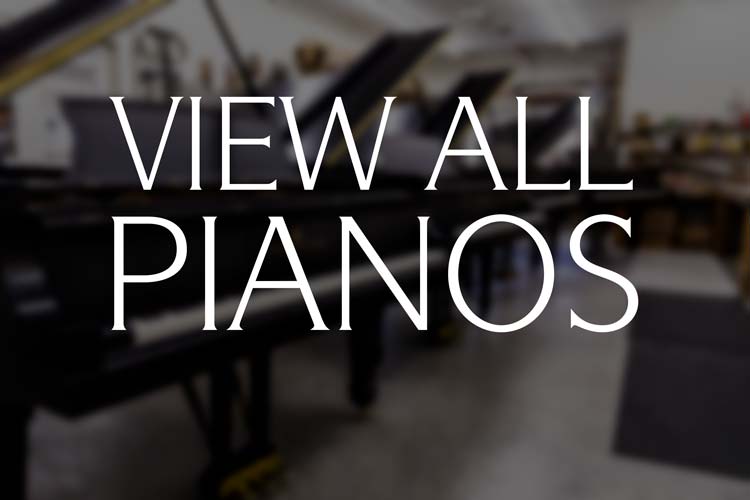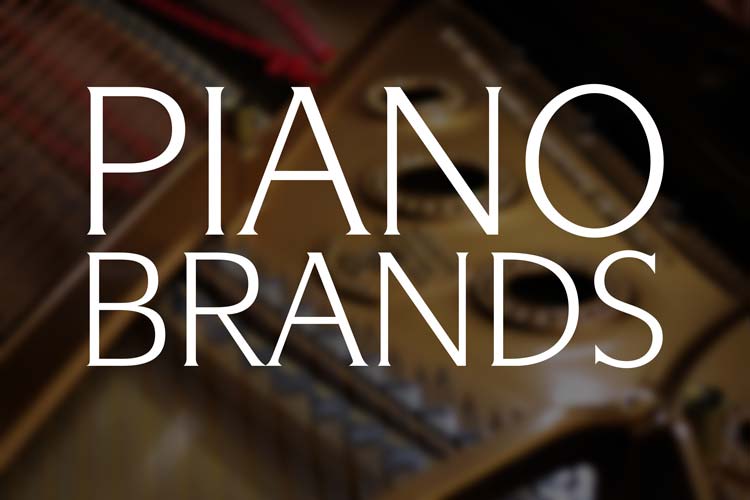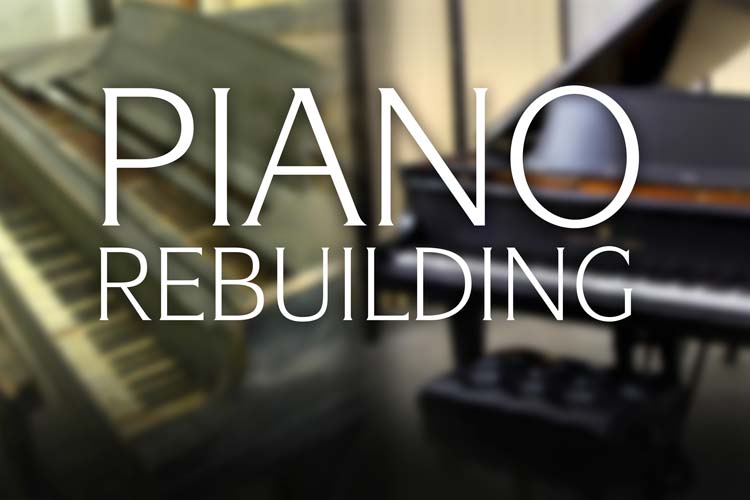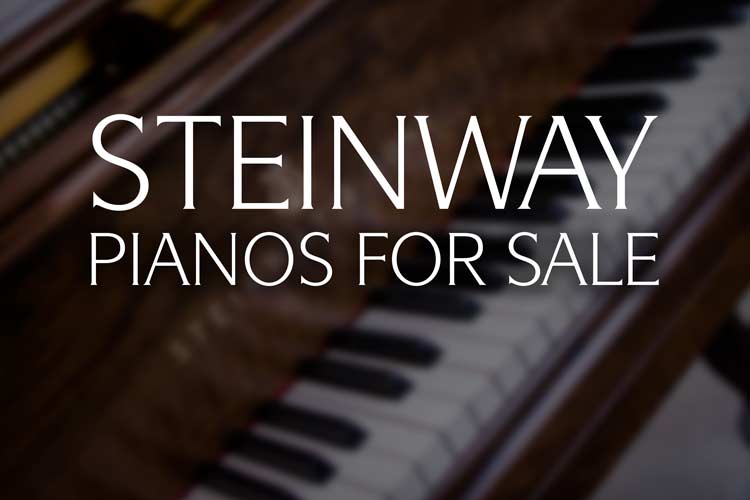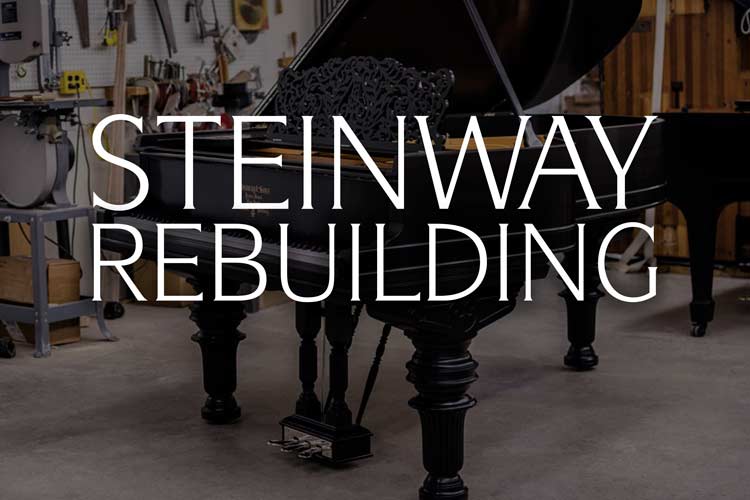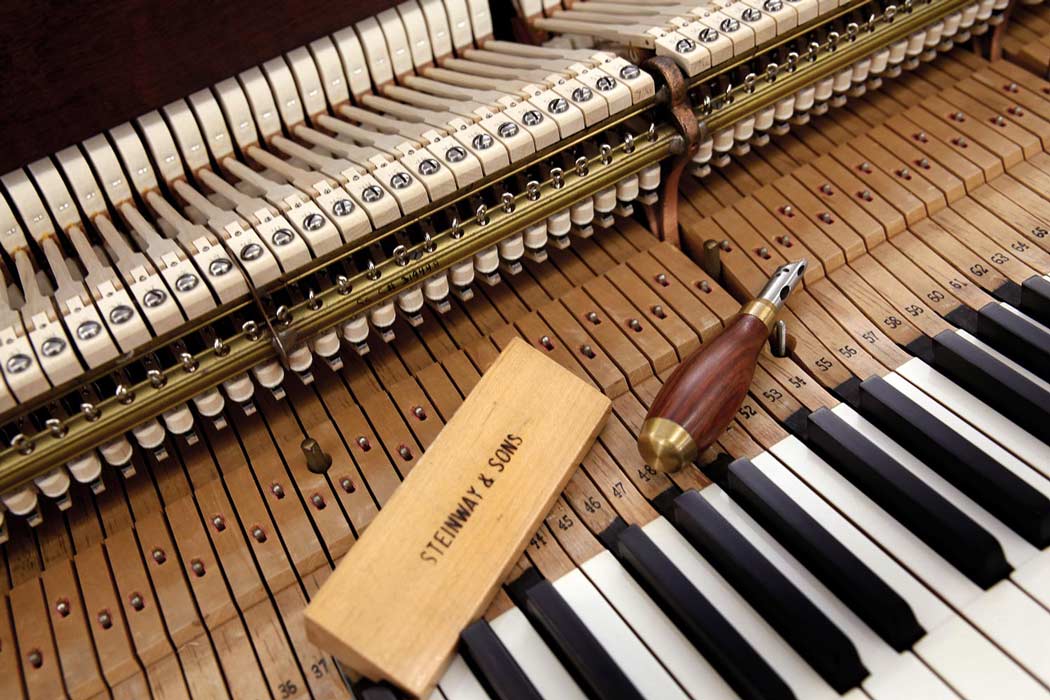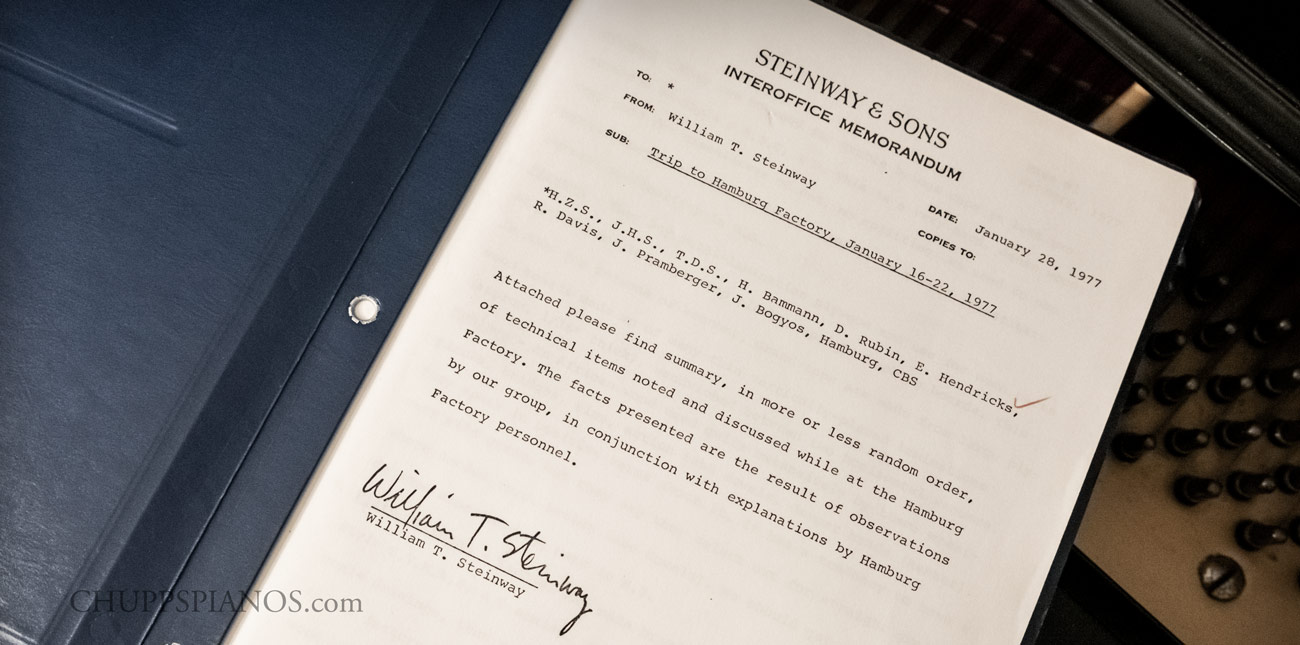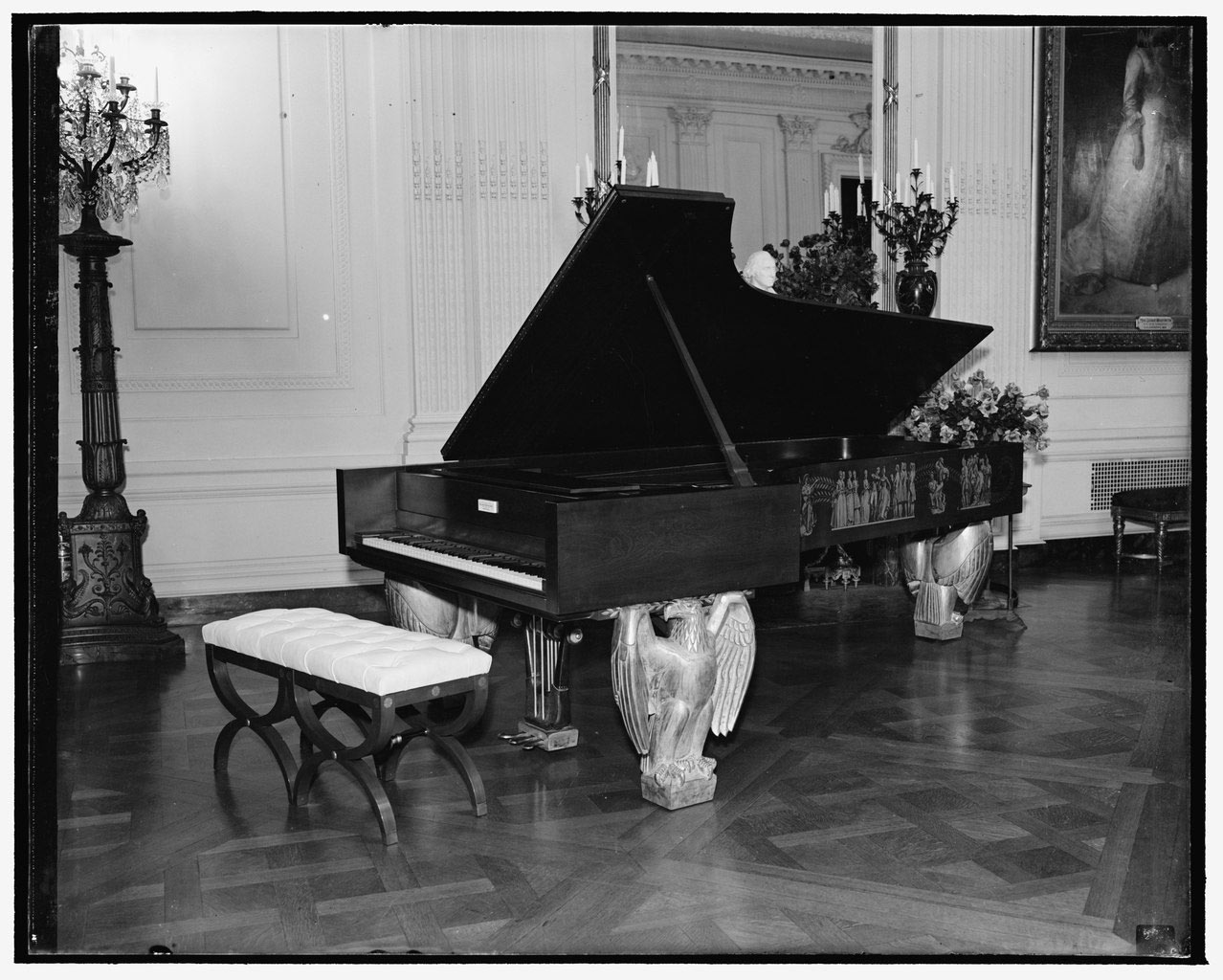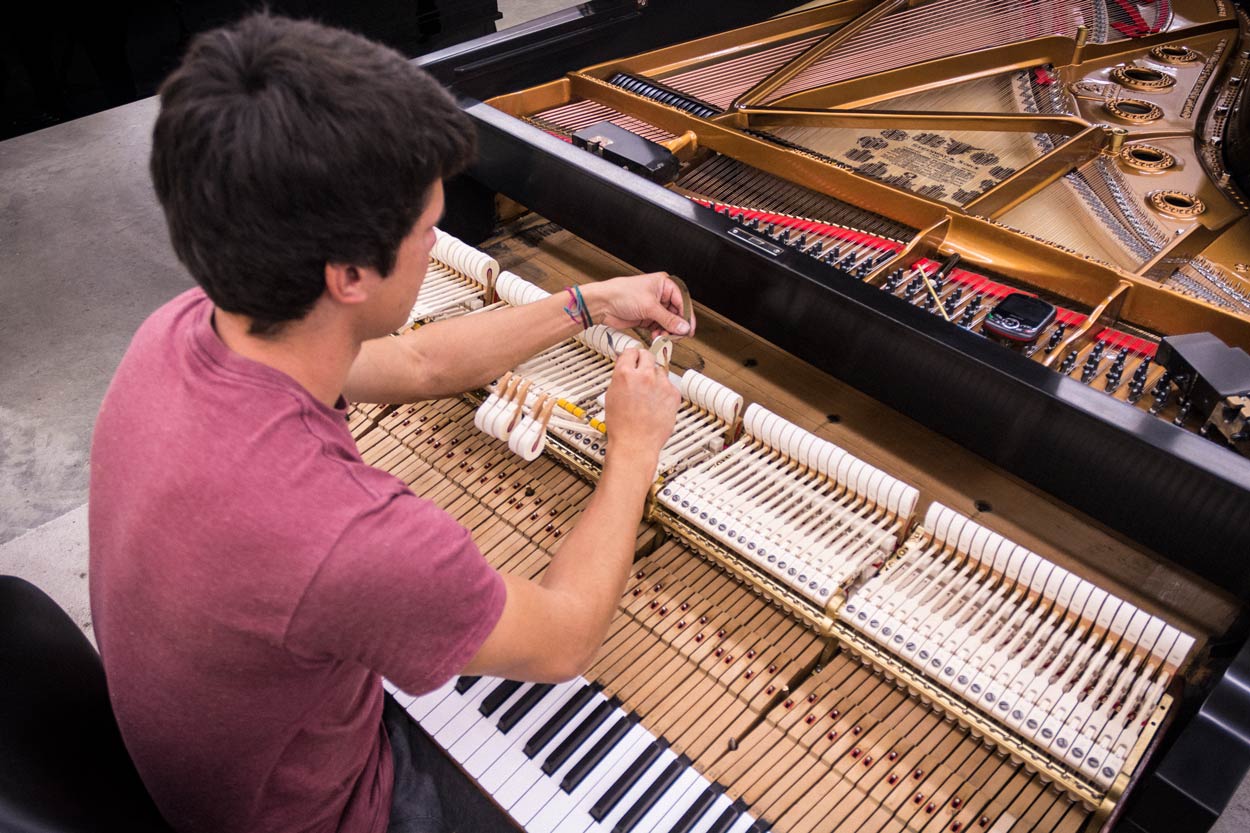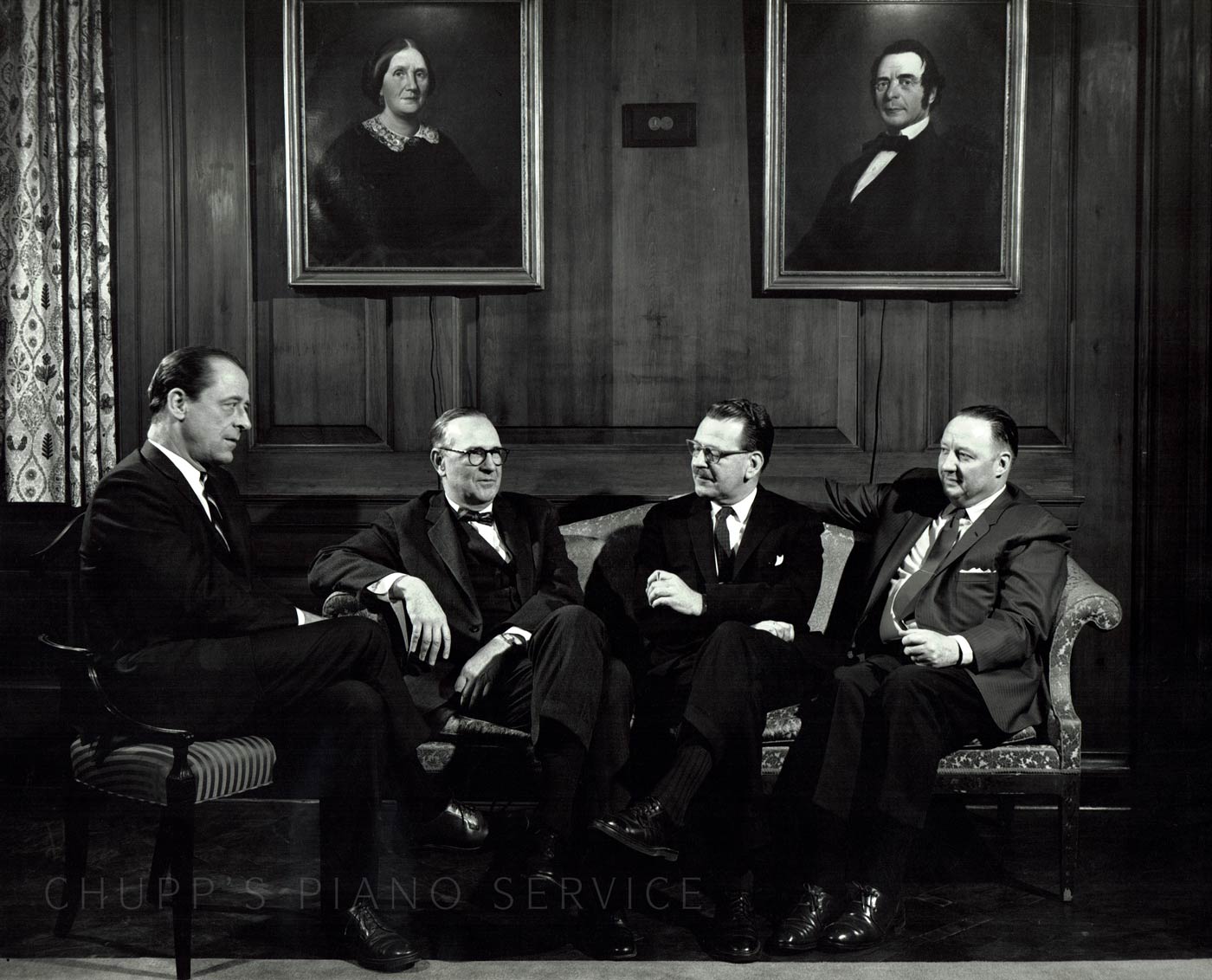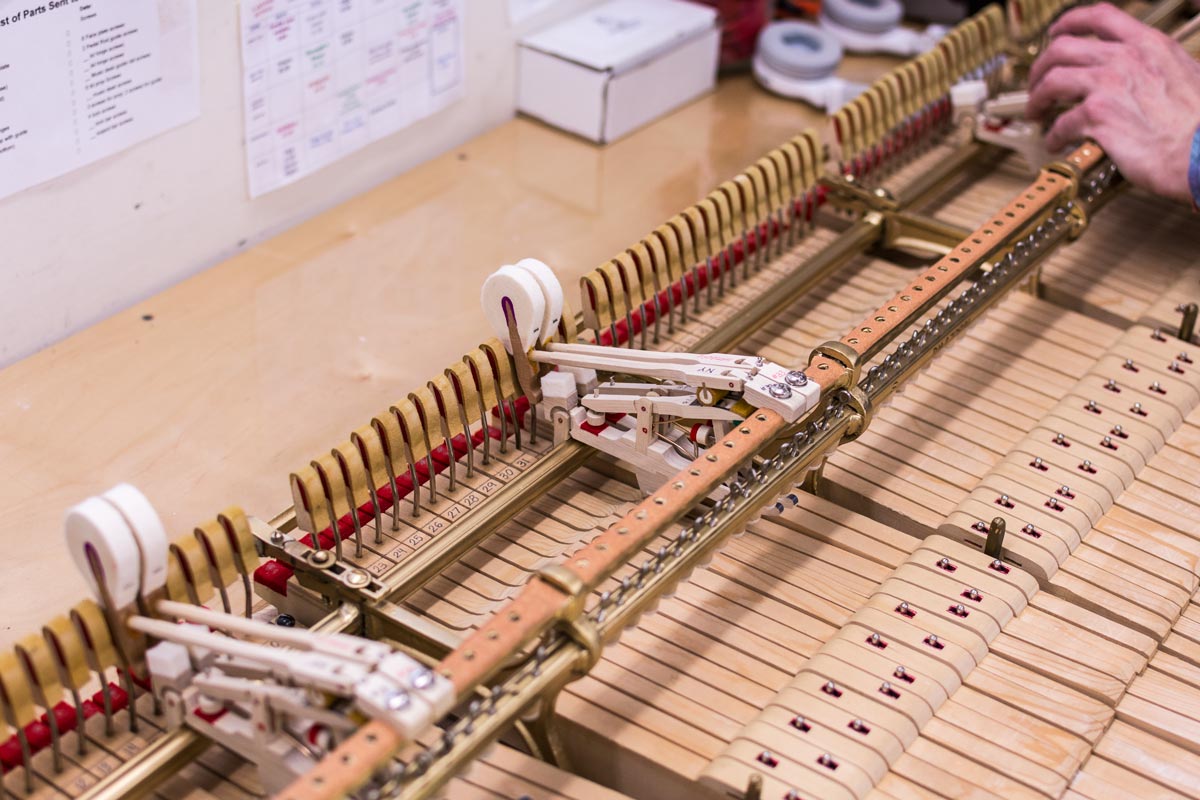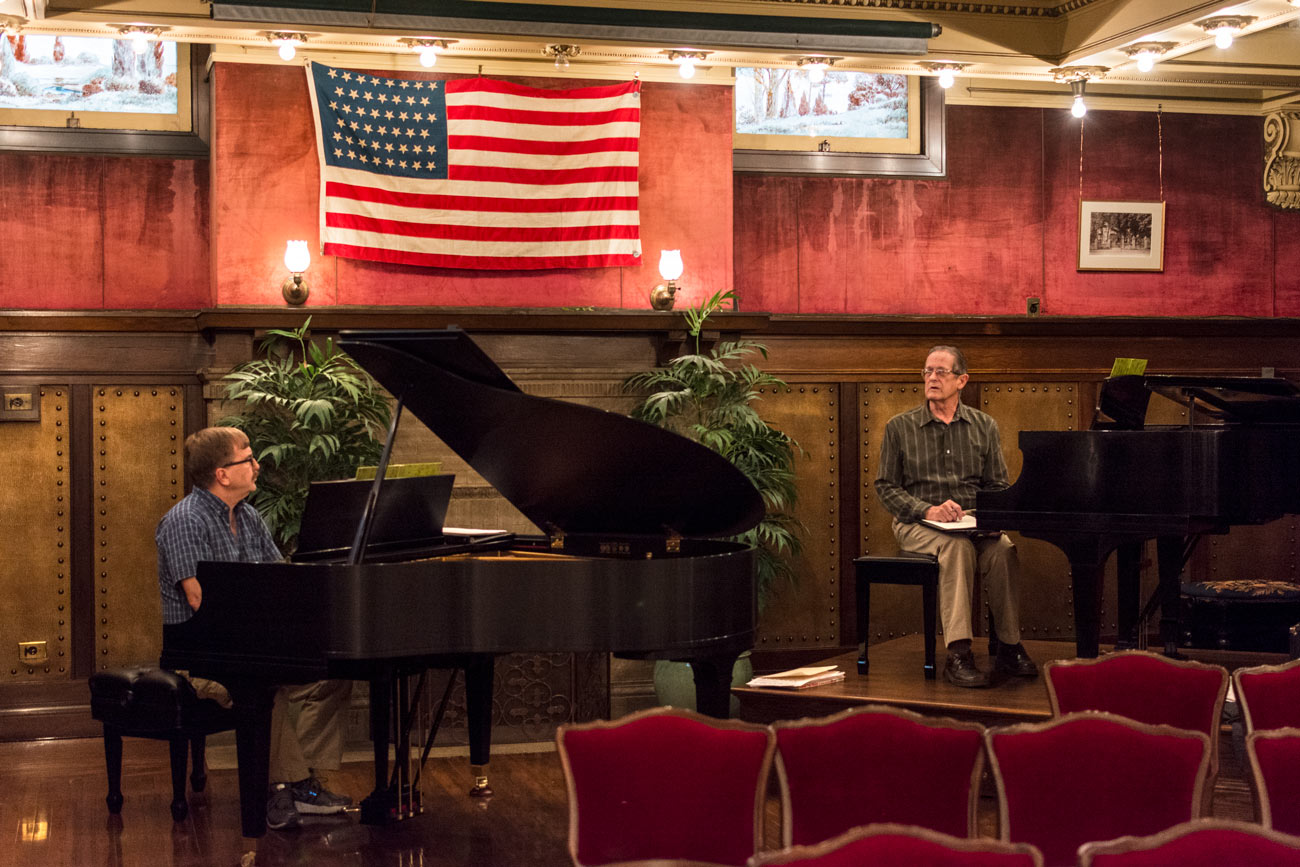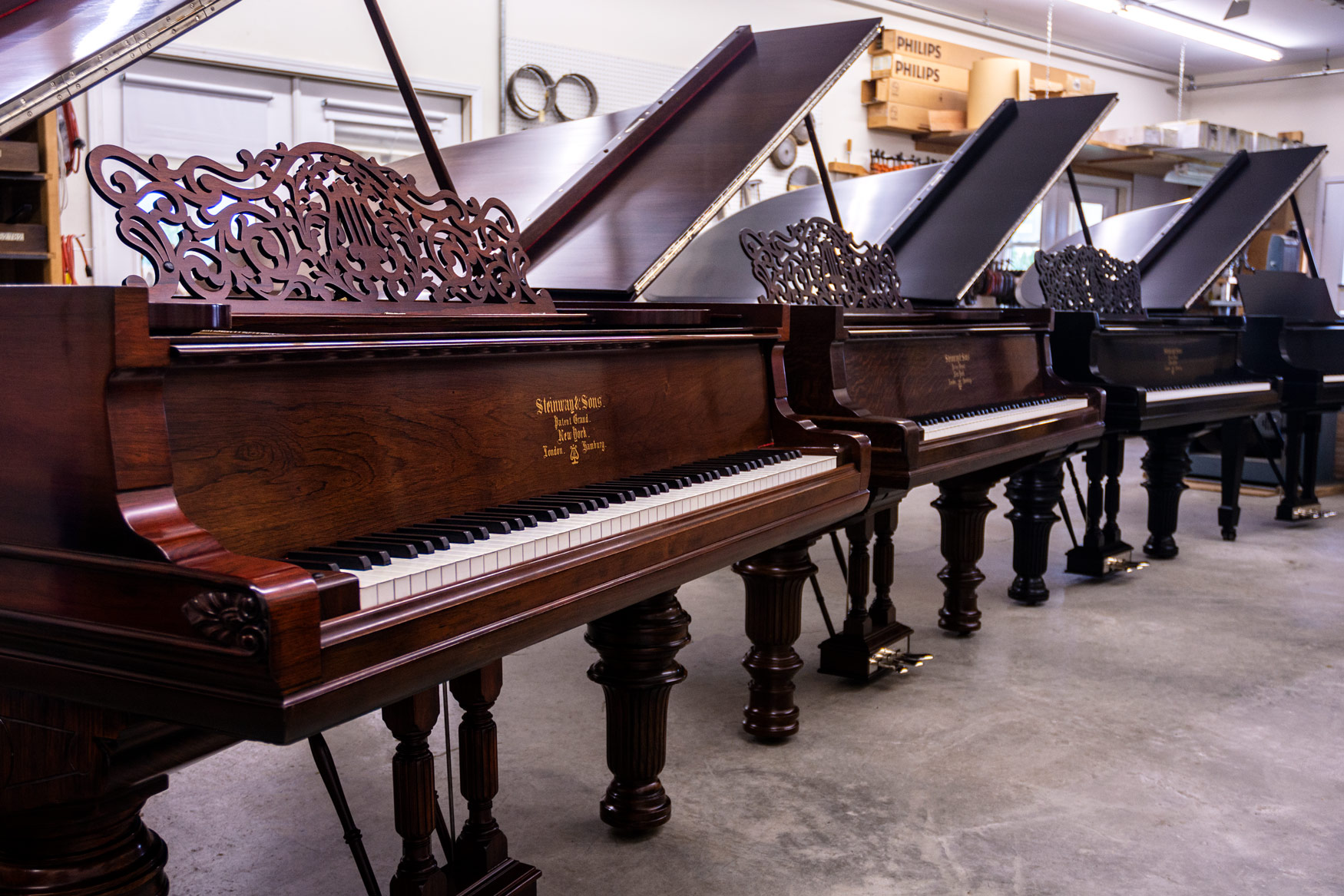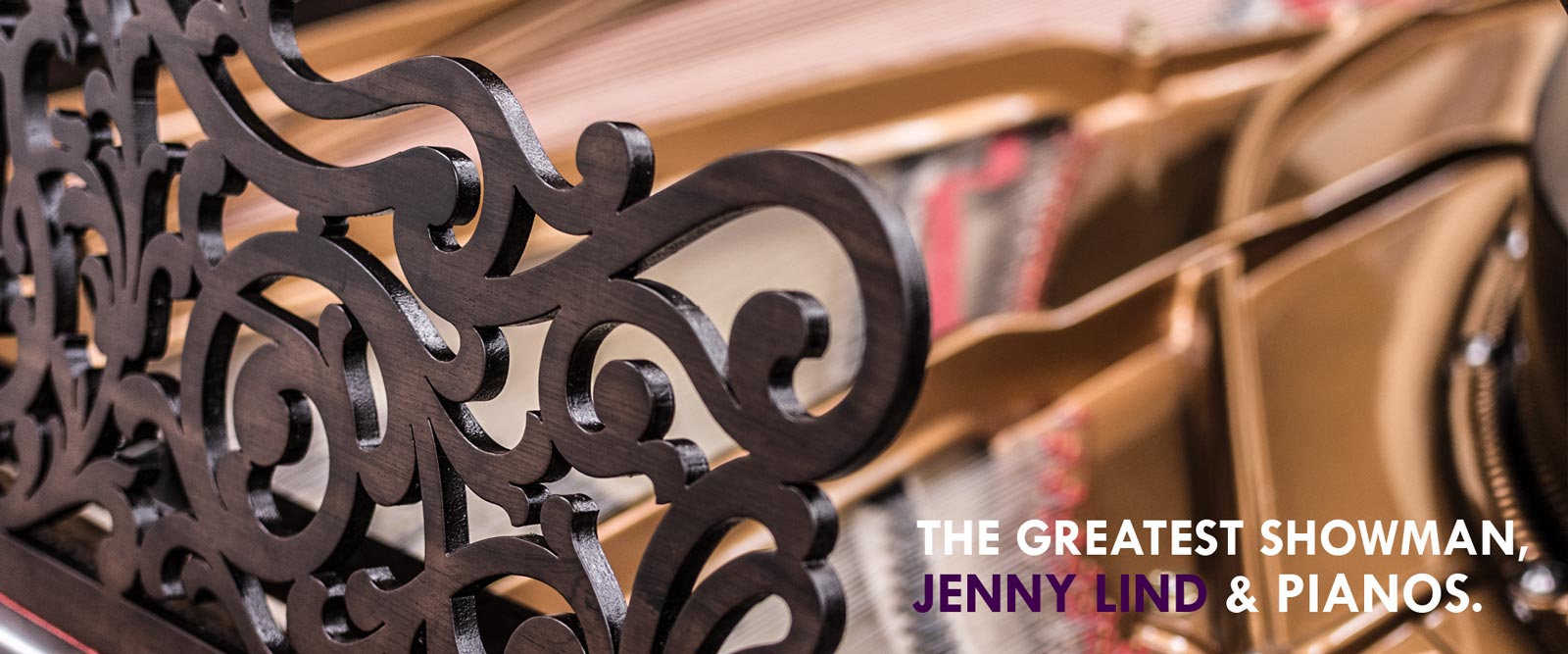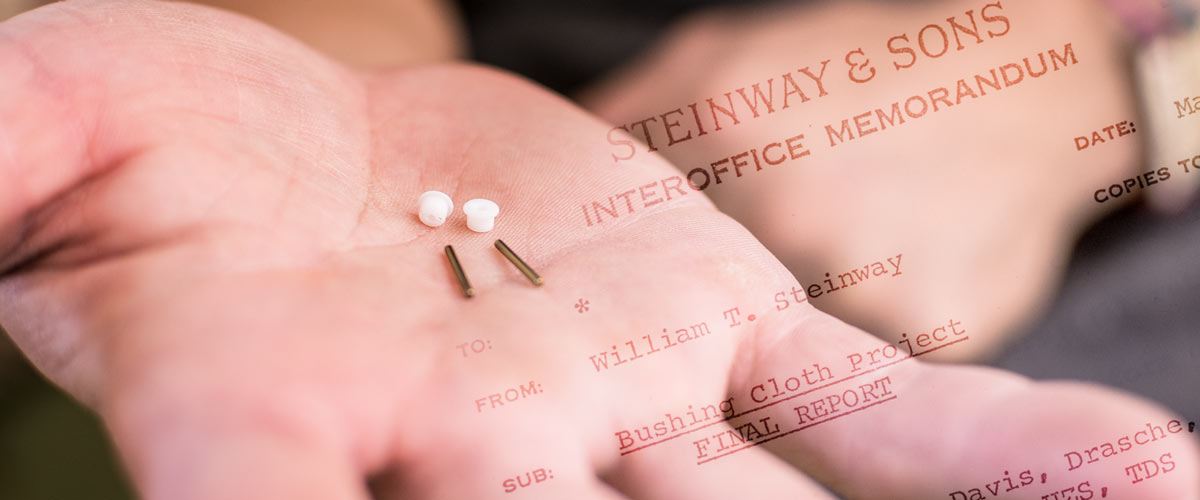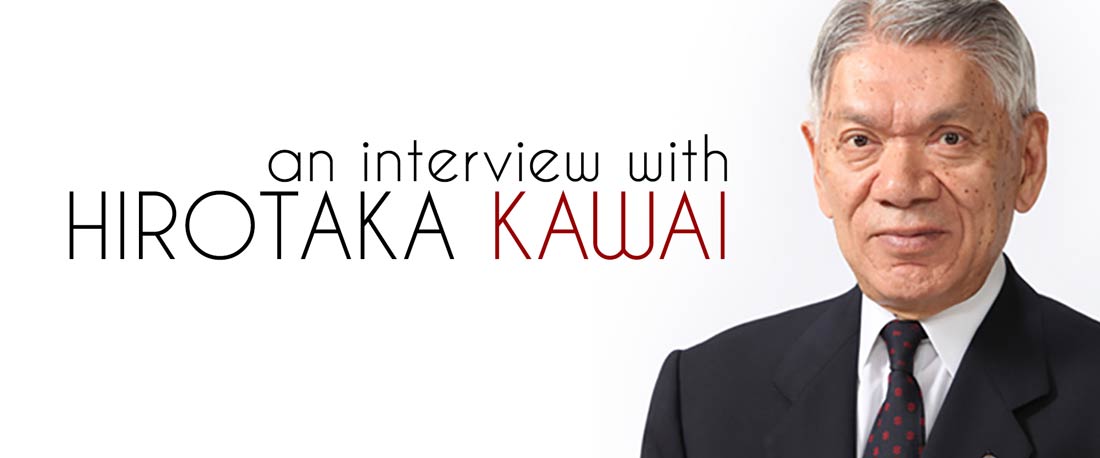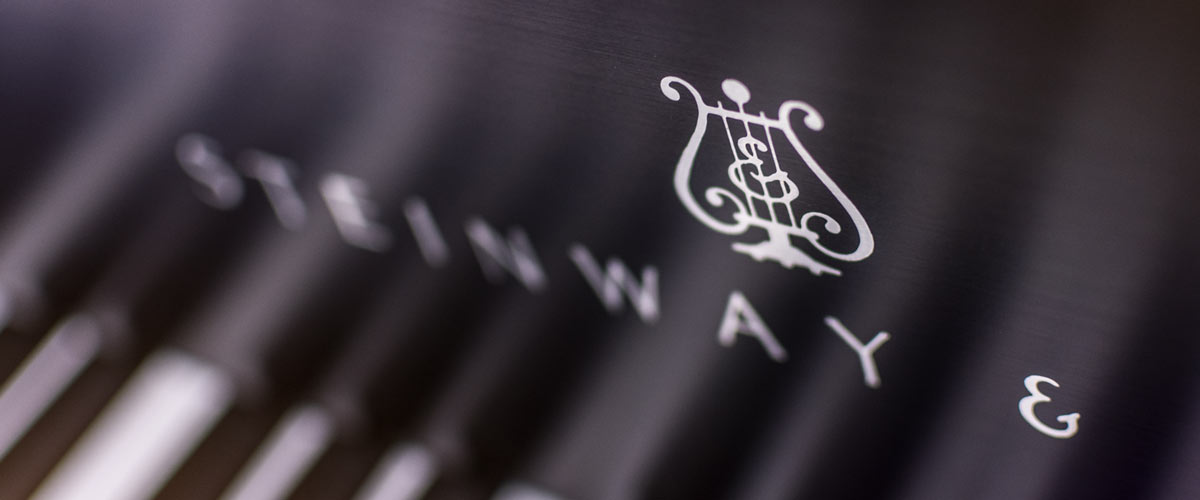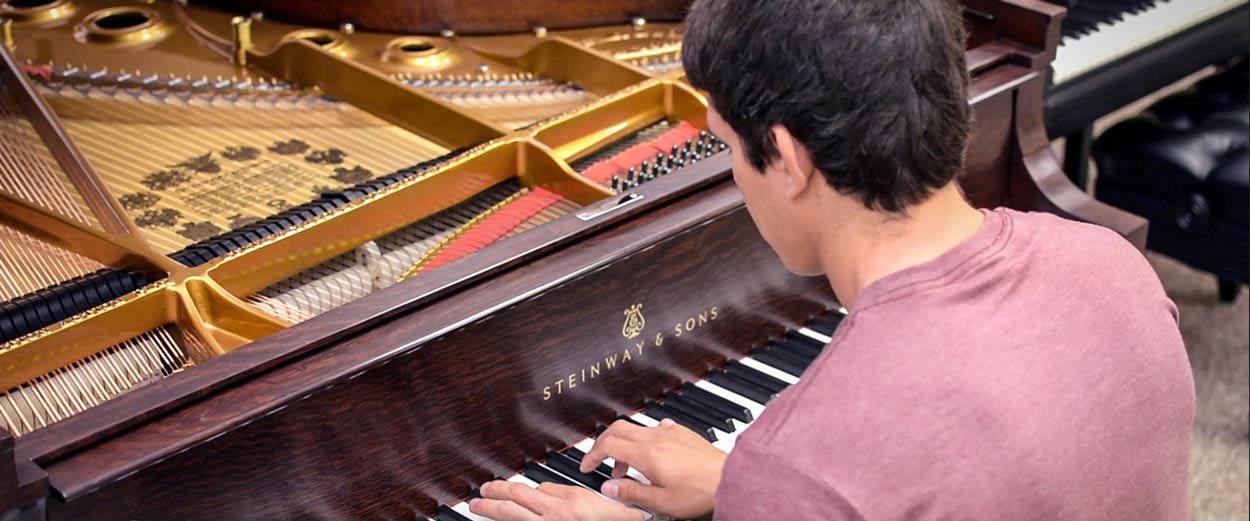“Here Are the Steinways and How they Grew” – Excerpts from a Historic Profile in Fortune Magazine, 1934
When History is Played Personal – A Few Things to Consider When Restoring The Family Piano
The Hamburg Steinway Factory – A Historic Report of Differences – ft. Excerpts from a Rare Report by William T. Steinway
An Historic Glimpse Into the 70's Hamburg Steinway Factory
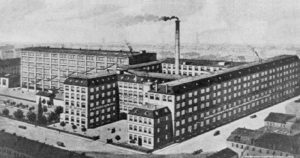 One of the most unique parts of the Steinway story, is the tail of two factories. Although with a name like Steinway (originally Steinweg), one could not be blamed for initially thinking that Steinway & Sons is a German company, transplanted to the United States. In fact, that is almost reversed. Founded in 1853 in the city of New York,Steinway & Sons was the brainchild of German immigrant Henry E. Steinway. Launching his new piano business into one of the most cutthroat and competitive businesses of his day, Henry and his offspring would quickly grow the company into one of the powerhouses of modern day music. As demand increased in the United States, demand increased overseas as well. The decision was made to open a factory overseas and the Steinway name returned to Germany - the City of Hamburg, to be exact. In 1880, C.F. Theodore and William Steinway founded the Hamburg Steinway Factory. A wholly owned venture, this new factory allowed them to avoid high import tariffs and allowed for easier distribution of their newly built pianos throughout the European market. Today, the Hamburg division continues to serve this purpose and most of the countries outside of North America are supplied with instruments crafted in Hamburg. Here in the United States, Hamburg Steinway pianos are often viewed as more 'exotic' and are known to posses a different tonal quality when compared to their New York factory brethren.
One of the most unique parts of the Steinway story, is the tail of two factories. Although with a name like Steinway (originally Steinweg), one could not be blamed for initially thinking that Steinway & Sons is a German company, transplanted to the United States. In fact, that is almost reversed. Founded in 1853 in the city of New York,Steinway & Sons was the brainchild of German immigrant Henry E. Steinway. Launching his new piano business into one of the most cutthroat and competitive businesses of his day, Henry and his offspring would quickly grow the company into one of the powerhouses of modern day music. As demand increased in the United States, demand increased overseas as well. The decision was made to open a factory overseas and the Steinway name returned to Germany - the City of Hamburg, to be exact. In 1880, C.F. Theodore and William Steinway founded the Hamburg Steinway Factory. A wholly owned venture, this new factory allowed them to avoid high import tariffs and allowed for easier distribution of their newly built pianos throughout the European market. Today, the Hamburg division continues to serve this purpose and most of the countries outside of North America are supplied with instruments crafted in Hamburg. Here in the United States, Hamburg Steinway pianos are often viewed as more 'exotic' and are known to posses a different tonal quality when compared to their New York factory brethren.
A Political Note… Steinway Pianos in the White House
White House Steinways - Since 1903
1600 Pennsylvania Ave in Washington, D.C. The home of the President of the United States... and multiple pianos? Like other countries, music is rooted in American history, so it is no wonder that pianos of various makers have found their way into one of the world's most well known political residences. Since 1903, the showpiece grand piano in the White House has been a Steinway Model D. Read on for more!The Current Piano - Steinway #300000
Steinway & Sons recognized the honor, prestige, and yes, marketing value that came with having their instrument reside in the home of the President of the United States. The most well-known piano in the White House is a 1938 Steinway & Sons Art Case Model D Concert Grand #300000 veneered in mahogany. Resting on legs resembling American Bald Eagles, this piano features motifs depicting traditional American music.Steinway Buys Renner – What it Means for the Piano Industry
Renner Joins the Growing Family of Steinway Musical Instruments' Owned Suppliers
In July of this year, it was announced that John Paulson's Steinway Musical Instruments had completed the purchase of Louis Renner GmbH & Co. KG. Renner is widely respected as one of the finest producers of piano action parts still in existence. Numerous makes of pianos, including Hamburg Steinways use Renner parts. Below is the Steinway & Sons announcement letter and below that are our thoughts on the issue.New York Steinways vs. Hamburg Steinways – a Tail of Two Factories
Steinway & Sons New York and Hamburg | What's the Difference?
Question: “What's the difference between Steinway pianos built at the company's New York Factory and their Hamburg Factory?"
An American Company
While Charles Dicken's novel A Tale of Two Cities dealt with the cities of Paris and London, this comparison deals with New York and Hamburg. Specifically, their shared role as the home for Steinway & Sons pianos. This unusual situation has resulted in key differences between the American and European variants of these legendary musical instruments.
Contrary to the belief of some, Steinway & Sons is not a European company and have always been an American company first and foremost. Founded by German immigrant Henry E. Steinway, the New York-based company grew quickly from its modest founding in 1853 to quickly become the leading piano maker in North America. This led to increased demand for their products in both the United States and around the world. As this demand for pianos grew, the decision was made to open a factory overseas and the Steinway name returned to Germany - the City of Hamburg, to be exact.
Excerpts from “The Other Masters of the Keyboard” – The Unsung Heroes of the Concert Stage
"Beauty cannot be measured, you see. It must be perceived."
The following paragraphs are taken from an article by Lili Földes entitled The Other Masters of the Keyboard. Through the experience of being married to a concert pianist (Andor Földes) and the keen eye of a journalist, Mrs. Foldes pulls back the curtain on the unsung artists of the keyboard - and the rest of the instrument we know as the piano.The Baldwin: The Story of a Piano Restoration – Ruthmere Museum & Chupp’s Pianos
Partnering With The Ruthmere to Restore Local History
This historic Baldwin Model M Baby Grand Piano was fully rebuilt by Chupp’s Piano Service. Built in 1938 at the Cincinnati Baldwin piano factory, this grand piano was a family heirloom of the Deputy family, the last residents of the historic Ruthmere Mansion in Elkhart, Indiana. (In fact, one of their family portraits at the museum shows the family sitting around this very piano.) The piano is believed to have been moved out of the mansion in 1969. Recently, the Deputy family generously donated the Baldwin piano to the Ruthmere Museum, returning it to its former home. This is the story of a historic piano’s full restoration. Producer/Shooter/Director: Benjamin Rogers - Music Written & Performed by Philip Balke - Special thanks to The Ruthmere Museum of Elkhart, IN.A Walk Down Memory Lane – Four Pianos, Years of History
Four Pianos, Hundreds of Years of History
We recently had several pianos lined up in our Rebuilding Facility that spanned the near entirety of what is considered the golden age of Steinway & Sons Factory quality. When we saw what we had set up, we couldn't help but snap some pictures to share! For lack of a better word, this was just plain cool! From the early days of modern piano building to the style of instrument most popular today, it's all represented! Here is some detail regarding these fine grand pianos.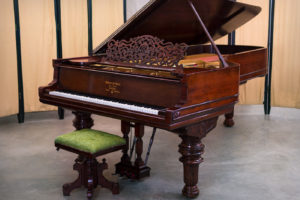 Steinway & Sons Model D #52626 was completed in early 1885. This means that construction of this piano began at the New York Steinway Factory in 1884. This is the first year that Steinway ever made what is now known as the king of concert grand pianos, the Model D! Veneered in a rich cut of rare Brazilian Rosewood and as one of the very first Model D Concert Grands ever built by Steinway, this piano marks the beginning of an era. It is a rare find indeed! The piano features a then typical round arm art case design with double narrow moldings around the case, a figured music desk with 'old-style' fretwork, hand-carved Victorian fluted flowerpot legs with hidden casters and a large box pedal lyre with carved pillars. This instrument was originally purchased for use at the DuPage County Library near Chicago, IL. This concert grand piano is currently located at our New Paris Rebuilding Facility and is available for selection and purchase.
[Click Here to Read More About This Piano.]
Steinway & Sons Model D #52626 was completed in early 1885. This means that construction of this piano began at the New York Steinway Factory in 1884. This is the first year that Steinway ever made what is now known as the king of concert grand pianos, the Model D! Veneered in a rich cut of rare Brazilian Rosewood and as one of the very first Model D Concert Grands ever built by Steinway, this piano marks the beginning of an era. It is a rare find indeed! The piano features a then typical round arm art case design with double narrow moldings around the case, a figured music desk with 'old-style' fretwork, hand-carved Victorian fluted flowerpot legs with hidden casters and a large box pedal lyre with carved pillars. This instrument was originally purchased for use at the DuPage County Library near Chicago, IL. This concert grand piano is currently located at our New Paris Rebuilding Facility and is available for selection and purchase.
[Click Here to Read More About This Piano.]
The Greatest Showman, Jenny Lind and Pianos
The Greatest Showman – The Piano Connection
The Greatest Showman hit theaters recently and with its solid box office numbers showed that the revival of the film musical is truly in force. Starring Hugh Jackman, this fictionalized musical focuses on the life of showman P.T. Barnum. The film is a great callback to classical films while still feeling current and ‘hip’. The film features a scene that although brief, has an interesting connection to the history of the piano industry.P.T. Barnum & Jenny Lind - An Overview
In 1850, P.T. Barnum arranged for Swedish singer Jenny Lind to tour the United States. A desire to appeal to a more highbrow audience and help ‘class up’ his reputation was key in his drive for his latest production. His reputation up to that point had been as someone who promoted more 'low brow' entertainment. Initially agreeing to $1,000.00 for each performance (plus expenses), Barnum also agreed to pay Lind up front for the tour. This was entirely based on her reputation in Europe, as he had never heard her sing. Lind later negotiated a high compensation package after discovering the immense scale and popularity of the cross-country tour. One of the greatest marketers and promoters of his day, Barnum made Jenny Lind into a household name before she ever arrived in North America. In fact, most Americans had no idea who she was prior to the start of his breathtakingly huge marketing campaign. When she arrived in New York, tens of thousands of spectators gathered at the port to greet her. Although Barnum and Lind amicably parted ways part way through the scheduled tour, it ended up being a great financial success for all involved. Lind was able to raise copious amounts of money for her various charities and she continued to tour North America under who own management. She would later marry her pianist, Otto Goldschmidt.Teflon Bushings – The Steinway & Sons “Teflon Era”
Teflon Bushings in Steinway Pianos– The Failed Experiment
If there was one quality that marked the early days of Steinway & Sons, it was the family company’s inherent desire to invent, tweak and improve the quality of their pianos. This led to famous innovations and improvements to grand piano design that continues to be standard a century later. Almost all of the company’s patents were filed during these first years. The study of the lineage of the modern grand piano is a fascinating one, filled with stories of both success and failure. The 'Teflon Era' will forever remain an infamous time for Steinway & Sons, but one that forced the industry to adapt around new ideas and parts.
Increased Competition – Attempted Innovation
During the early 1960s, work began on another project that company leadership hoped would again boost the company’s reputation as a world leading instrument. Continued pressure from less expensive yet high-quality pianos from Japanese makers like Yamaha and Kawai began to push Steinway from their position as the North American piano king. (This battle between the ‘east and the west’ wages on even today. ) A number of their major American competitors were either long gone or in decline. A document provided to Chupp's Piano Service proves interesting. In a letter dated April 6th, 1979 to the late Ed Hendricks, a former Vice President of Marketing and owner of Hendricks’ Pianos in Chicago,....
Famous Musicians & Their Preferred Pianos – Infographic
Over the years, countless musicians have made the piano their primary musical instrument. Companies have fought tooth and nail to win the hearts (and wallets) of artists around the world. Today's big players in the concert market include Steinway & Sons, Kawai, Yamaha and Fazioli continues to make inroads. Over the years, there have been many other companies who have made fine concert instruments that continue to be cherished by pianists. Click to view an infographic highlighting just a few of the artists who continue to make the piano come alive and learn what pianos they prefer to use on the concert stage.
In The News: From The Top, An Interview With Hirotaka Kawai
Music Inc. Magazine Interview With The President of Kawai
Kawai Musical Instruments president Hirotaka Kawai sat down with Frank Alyker of Music Inc. Magazine to discuss Kawai's 90th anniversary and the growth and philosophy of the Kawai company. Founded by Koichi Kawai in 1927, Kawai has grown to become one of the leading piano makers in the world. Over the years they have also manufactured organs, synthesizers, and guitars. Through all of this, however, they have remained focused on their primary goal - the perfection of the piano. Chupp's Piano Service is proud to be the authorized Kawai dealer for the Michiana region.

